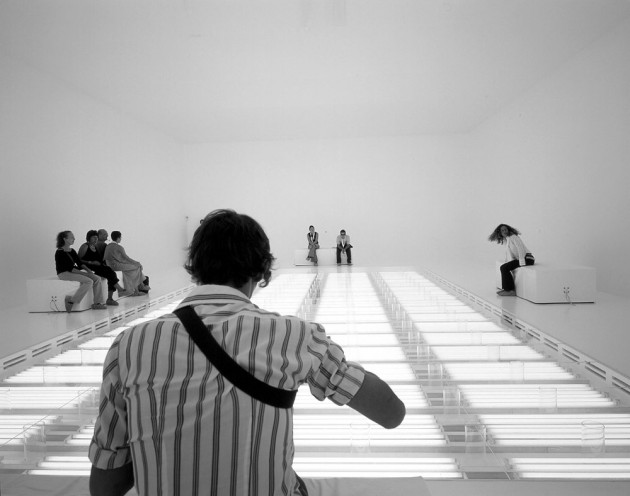Philippe Rahm
Philippe Rahm
- born 1967 in Switzerland
- studied at EPFL and ETH Zurich
- diploma in architecture, 1993
- lives in Paris and Lausanne
- teaches at ECAL Lausanne
- web philipperahm.com
His works are poetic and beautiful, address thermodynamics, biochemistry and climate changes, and show us a future by merging of neuroscience and architecture. Maybe a new class of architects will emerge in his footsteps, with a new understanding of matter and it's neurophysiological impact on humans?
Hormonorium
He created the Hormonorium for the 2002 Venice Architecture Biennale. The space stimulates physical reactions in humans similar to those experienced on a mountain top of about 3000 meter altitude. A white room is illuminated with a floor of light tubes, generating a very intense light between 5000 to 10000 lux. The white light with UV rays stimulates the reduction of melatonin in the human body, which causes a decrease in fatigue, a probable increase in sexual desire, and regulation of our moods. The quantity of oxygen in the room is reduced from 21 to 14.5 percent, which also corresponds to levels found on mountain tops. This can lead to altered states of consciousness. Through the production of endomorphine a slight euphoria can be experienced. A slight hypoxia - body deprived of adequate oxygen supply - can manifest itself through confusion, disorientation or bizarre behavior.
"One had the impression of floating in space, of no longer knowing up and down."
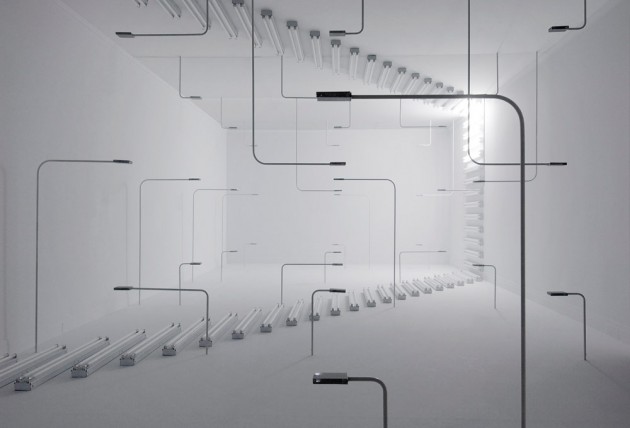
Interior Weather, Canadian Center of Architecture in Montreal in 2007
"The goal is to project an architecture that is capable of indicating possible uses of space which are dictated only by the chance confluence of three climatic parameters: temperature (celsius), light intensity (lux), and relative humidity (%), so that T * lux * HR = form and function. The installation is conceived as a study to test the potential of fluctuating climatic conditions to generate new functions, and thus new architectural programmes. "
- [archinect]
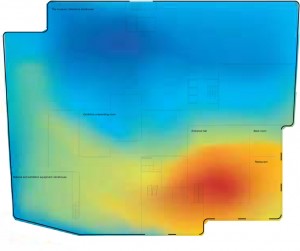
Convective Museum - Space as thermodynamic tension. Rahm proposes an architecture as meteorology and atmosphere. Two poles of heat - one 16° the other 22° Celsius - create a thermodynamic imbalance. The entire museum is composed of a multitude of climates and flow between the two poles. The placement of the colder pole at a higher altitude gives rise to a cyclic flow of air (warm air rises, cools and descends again).
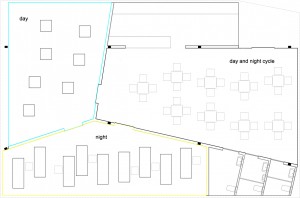
Split times café is divided into 3 cells: the natural day-night cycle, the day zone and the night zone. It gives the possibility of live in three temporalities. The zones are designed with colored glass (to force the hormones into day/night behaviors) and appropriate furniture.
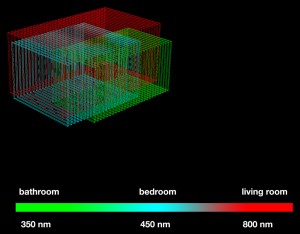
Ghost flat is a project of living in unknown dimensions. The room do not take shape in the spatial dimensions, but in specific fraction of the electromagnetic spectrum.
